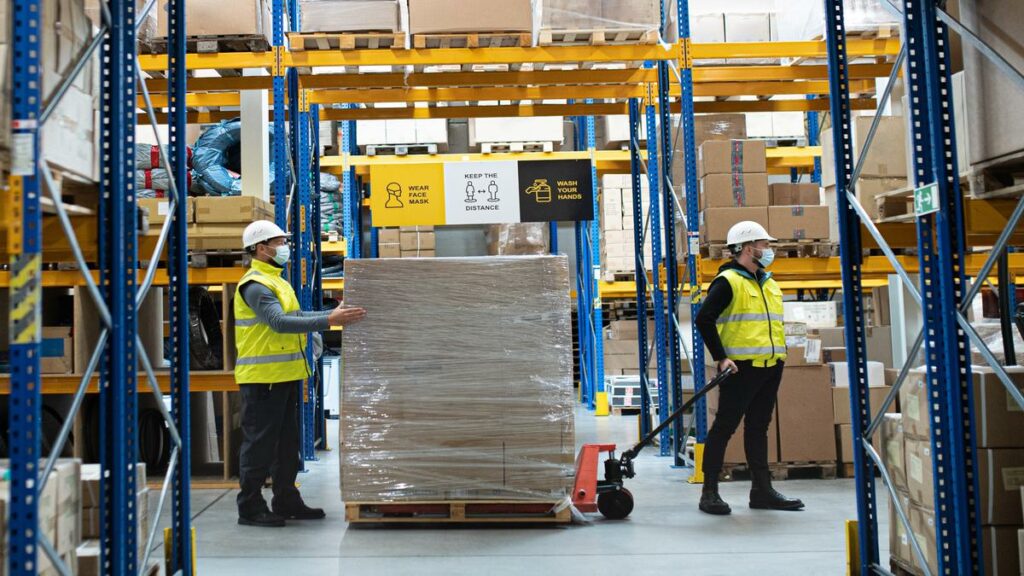Warehouse vs. Distribution: Key Business Insights

In the realm of logistics, understanding the operational dynamics between warehouses and distribution centers is crucial for businesses aiming to enhance their supply chain efficiency. This guide delves deep into the Warehouse vs Distribution debate, providing an in-depth examination of the fundamental differences and intelligent Logistics Center Insights. Armed with this knowledge, businesses can optimize their storage solutions and streamline logistics operations.
Unraveling the Fundamentals: Warehouse and Distribution Center
A warehouse primarily functions as a storage sanctuary, focusing on the long-term retention and safeguarding of inventory, facilitating future demand and bulk storage.
Contrastingly, a distribution center operates as a high-velocity hub, fine-tuned for rapid product sorting, packaging, and dispatching, designed to meet immediate market demands with efficiency.
Operational Divergence and Purpose
- Storage Duration: Warehouses are synonymous with extended storage, whereas distribution centers emphasize swift inventory turnover to facilitate rapid distribution.
- Inventory Dynamics: Warehouses maintain stable inventory levels, while distribution centers dynamically adjust to meet immediate order fulfillment requirements.
- Enhanced Services: Distribution centers typically offer additional services like product
Customization and direct shipping, which are less prevalent in traditional warehouse operations.
Intelligent Role in Supply Chain Enhancement
Warehouses are pivotal in strategic stockpiling, providing a buffer against supply chain disruptions and enabling seasonal inventory adjustments, essential for long-term inventory management.
Distribution centers act as accelerators of supply chain fluidity, ensuring quick product movement and efficient customer order fulfillment, vital for reducing inventory holding costs and enhancing customer satisfaction.
Technological Advancements and Operational Efficacy
Technological evolution has significantly upgraded warehouses and distribution centers into advanced logistical entities. Automated systems, comprehensive management software, and real-time analytics play crucial roles in enhancing operational efficiency and decision-making accuracy.
Intelligent Decision-Making for Businesses
The choice between a warehouse and a distribution center is influenced by:
- Business Model and Product Nature: Fast-moving or perishable goods often require the agile processing capabilities of distribution centers.
- Market Demand and Delivery Timeliness: High-demand products or those needing quick replenishment are best served by distribution centers.
- Cost Considerations: Although distribution centers offer speed, they may incur higher operational costs compared to traditional warehouses.
Evolutionary Trends and Future Perspectives
The evolving landscape sees warehouses and distribution centers merging functionalities, creating hybrid models that blend storage efficiency with fulfillment agility, driven by technological advancements and market trends.

Transform your logistics operations with our innovative solutions. We deliver from Los Angeles to Las Vegas, with every city in between. Call us now for a free quote and consultation!
FAQ Section: Comprehensive Insights
How to decide between a warehouse and a distribution center for my business?
Assess your logistical needs, considering inventory type, storage duration, and fulfillment speed. Distribution centers are ideal for rapid order processing, while warehouses suit long-term storage needs.
Can a business utilize both warehouses and distribution centers?
Yes, integrating both can maximize supply chain efficiency, balancing between extensive storage and quick fulfillment.
What role does technology play in enhancing warehouse and distribution center operations?
Technology significantly improves efficiency, automating processes, ensuring inventory accuracy, and expediting fulfillment, thus streamlining the supply chain.
Stay connected and be part of the community by following us on Instagram: @lasvegasexpedited.
